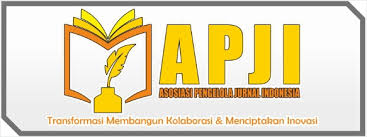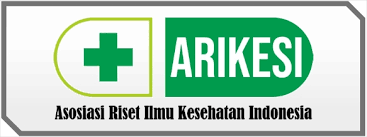Trauma Kepala pada Anak: Klasifikasi Hingga Pemantauan jangka Panjang
Abstract
Head trauma in children are frequent caused by falling, games, traffic accidents and more. Not all of head trauma continues to be brain injury. According with this, all of doctor must be able to established the diagnosis and classified head trauma to determine the optimal management and prognosis especially related with problems of brain development after head trauma. Long-term follow up should be done especially in severe and moderate head trauma to early detection any problems about development progress in this child
Keywords
Full Text:
PDFReferences
Adelson PD, Bratton SL, Carney NA, et al, 2003. Guidelines for the acute medical management of severe traumatic brain injury in infants, children, and adolescents. Chapter 5. Indications for intracranial pressure monitoring in pediatric patients with severe traumatic brain injury. Pediatr Crit Care Med, 4(3 Suppl): S19-24. [PMID:12847341]
Aquino L, Kang CY, Harada MY, Ko A, Do-Nguyen A, Ley EJ, et al, 2017. Is Routine Continuous EEG for Traumatic Brain Injury Beneficial?. Am Surg, 83 (12):1433-1437
Astrand R, Romner B, Reinstrup P, Friis-Hansen L, Unden J, 2012. Comparison between capillary, venous and arterial levels of protein S100B in patients with severe brain pathology. Clin Chem Lab Med, 50:1055–1061
Berger S, Schurer L, Hartl R, Deisbock T, Dautermann C, et al, 1994. 7,2% NaCl/10% dextran-60 versus 20% mannitol for treatmen intracranial hipertension. Acta Neuroped Suppl(Wien), 60: 494-498
Berger RP and Kochanek PM, 2006. Urinary S100B concentrations are increased after brain injury in children: a preliminary study. Pediatr Crit Care Med, 7(6): 557–561
Berger RP, Bazaco MC, Wagner AK, Kochanek PM, Fabio A, 2010. Trajectory analysis of serum biomarker concentrations facilitates outcome prediction after pediatric traumatic and hypoxemic brain injury. Dev Neurosci, 32: 396–405
Berksoy EA and Anil M, 2019. Effectiveness of complete blood count parameters for Predicting intracranial injury in children with minor head trauma. Sanamed, 14(1): 59-65
Brain Trauma Foundation; American Association of Neurological Surgeons; Congress of Neurological Surgeons; Joint Section on Neurotrauma and Critical Care, Bratton SL, Chestnut RM, Ghajar J, McConnell Hammond FF, Harris OA, Hartl R, Manley GT, Nemecek A, Newell DW, Rosenthal G, Schouten J, Shutter L, Timmons SD, Ullman JS, Videtta W, Wilberger JE, Wright DW, 2007. Guidelines for the management of severe traumatic brain injury. I. Blood pressure and oxygenation. J Neurotrauma, 24(suppl 1): S7-13
Brasure M, Lamberty GJ, Sayer NA, Nelson NW, Macdonald R, Ouellette J, Tacklind J, et al, 2012. Multidisciplinary postacute rehabilitation for moderate to severe traumatic brain injury in adults. Agency for Healthcare Research and Quality (AHRQ) Comparative Effectiveness Reviews, 72, ES1–ES20. Available at: http:// effectivehealthcare.ahrq.gov/ehc/products/283/1141/CER72_TBIPostacute_FinalReport_20120725.pdf
Brenner DJ and Hall EJ, 2007. Computed tomography–an increasing source of radiation exposure. N Engl J Med, 357:2277–2284
Bruce DA, 1996. Pediatric head injury. In Wilkin RH, Rengachary SS, eds. Neurosurgery, 2nd ed. New york, St Louis, San Francisco: McGraw-Hill, Health Proffesion Devision, pp: 2079-714
Carter BG and Butt W, 2001. Review of the use of somatosensory evoked potentials in the prediction of outcome after severe brain injury. Crit Care Med, 29(1):178-86
Centers for Disease Control and Prevention, 2003. Report to congress on mild traumatic brain injury in the United States: Steps to prevent a serious public health problem. Atlanta (GA): National Center for Injury Prevention and Control
Centers for Disease Control and Prevention, 2015. Report to conggress on traumatic brain injury in USA: Epidemiology and rehabilitation. Atlanta, GA: Author
Centers for Disease Control and Prevention, 2014. TBI data and statistics.
Ciurea AV, Tascu A, Brehar FM, et al, 2009. A life threatening problem in infants: supratentorial epidural hematoma. J Med Life. 2(2):191-5
DePompei R, 2010. Pediatric Traumatic brain injury: Where do we go from here? The Asha leader, 15:16-20
Fanconi S, Klöti J, Meuli M, et al, 1988 Dexamethasone therapy and endogenous cortisol production in severe pediatric head injury. Intensive Care Med. 14(2):163-6.
Fulkerson DH, White IK, Rees JM, Baumanis MM, Smith JL, Ackerman LL, Boaz JC, Luerssen TG, 2015. Analysis of long-term (median 10.5 years) outcomes in children presenting with traumatic brain injury and an initial Glasgow Coma Scale score of 3 or 4. J Neurosurg Pediatr, 16(4): 410-9
Jeremitsky E, Omert L, Dunham CM, Protetch J and Rodriguez A, 2003. Harbingers of poor outcome the day after severe brain injury: hypothermia, hypoxia, and hypoperfusion. J Trauma, 54:312-319
Shi J, Dong B, Mao Y, Guan W, Zhu R ang Wang S, 2016. Review: traumatic brain injury and hiperglycemia, a potentially modifiable risk factor. oncotarget, 7(43): 71052-7061
Kamal HM, Sammou H, Mardini AA, Zaitoni A, 2011. Fall of platelet count in children with traumatic brain injury: is it of value? Chin J Traumatol, 14(6):336-42.
Khanna S, Davis D, Peterson B, et al, 2000. Use of hypertonic saline in the treatment of severe refractory posttraumatic intracranial hypertension in pediatric traumatic brain injury. Crit Care Med, 28(4):1144-51.
Kochanek PM, Carney N, Adelson PD, Ashwal S, Bell MJ, Bratton S, et al, 2012. Guidelines for the acute medical management of severe traumatic brain injury in infants, children, and adolescents--second edition. Pediatr Crit Care Med, 13 Suppl 1: S1-82.
Kurihara M, Shishido A, Yoshihashi M, Fujita H, Kohagizawa T, 2012. Prognosis of posttraumatic epilepsy in children. J Jpn Epilepsy Soc, 29: 460– 469
Lippi G, Carbucicchio A, Benatti M, Cervellin G, 2013. The mean platelet volume is decreased in patients with mild head trauma and brain injury. Blood Coagul Fibrinolysis, 24(7): 780–3
Malec JF, Brown AW, Leibson CL, Flaada JT, Mandrekar JN, Diehl NN, and Perkins PK, 2007. The Mayo classification system for traumatic brain injury severity. Journal of Neurotrauma, 24(9), 1417–1424
Kastilong M, Subrata I, Tangkudung G, Khosama H, 2018. Rasio neutrofil limfosit dan luaran cedera kepala. J sinaps, 1(2): 20-28
Mihic J, Rotim K, Marcikic M, Smiljanic D, 2011. Head Injury in Children. Acta Clin Croat, 50(4):539-548
Mitra B, Cameron P, Butt Warwick, 2007. Population-based study of paediatric head injury. J of Paed and child Health, 43(3): 154-159
Pineda JA, Leonard JR, Mazotas IG, Noetzel M, Limbrick DD, et al, 2013. Effect of implementation of paediatric neurocritical care programme on outcome after severe traumatic brain injury: a retrospective cohort study. Lancet Neurol, 12(1): 45-52
Rovlias A and Kotsou S, 2000. The influence of hyperglycemia on neurological outcome in patients with severe head injury. Neurosurgery, 46: 335-342
Rovlias A and Kotsou S, 2001. The Blood Leucocyte count and its prognostic significance in severe head injury. Surg Neurol, 55(4): 190–6
Seyed Saadat SM, Bidabadi E, Seyed Saadat SN, Mashouf M, Salamat F and Yousefzadeh S. Association of persistent hyperglycemia with outcome of severe traumatic brain injury in pediatric population. Childs Nerv Syst. 28(10): 1773-1777
Song SS and Lyden P, 2013. Overview of therapeutic hypotermia. Curr Treat Options Neurol, 14(6): 541-548
Silvia DV , Linda WX , Juliet N, Christine M, Benjamin JL , Joel K, et al, 2018. Long-term follow-up of pediatric head trauma patients treated at Mulago National Referral Hospital in Uganda. J of Neurosurg, 23:1-133.
Suman S, Kumar N, Singh Y, Kumar V, et al, 2016. Evaluation of serum electrolytes in TBI patients: prospective randomized observational study. J of Anes and Crit Care. 5(3): 1-6
Suskauer SJ, Huisman TA, 2009. Neuroimaging in pediatric traumatic brain injury: current and future predictors of functional outcome. Dev Disabil Res Rev, 15(2): 117-23
Thelin EP, Nelson DW, Bellander BM, 2017. A review of the clinical utility of serum S100B protein level in the assessment of traumatic brain injury. Act Neurochir, 159:209-25
Turfan M, Erdogan E, Ertas G, Duran M, Murat SN, Celik E, et al, 2013. Usefulness of mean platelet volume for predicting stroke risk in atrial fibrillation patients. Blood Coagul Fibrinolysis, 24(1): 55–8
Vespa PM, Nuwer MR, Nenov V, Ronne-Engstrom E, Hovda DA, et al, 1999. Increased incidence and impact of nonconvulsive and convulsive seizures after traumatic brain injury as detected by continuous electroencephalographic monitoring. J Neurosurg, 91(5):750-60
DOI: http://dx.doi.org/10.30742/jikw.v8i2.620
Refbacks
- There are currently no refbacks.
Copyright (c) 2019 Erny Erny

This work is licensed under a Creative Commons Attribution-NonCommercial 4.0 International License.
Jurnal Ilmiah Kedokteran Wijaya Kusuma is licensed under a Creative Commons Attribution-NonCommercial 4.0 International License










